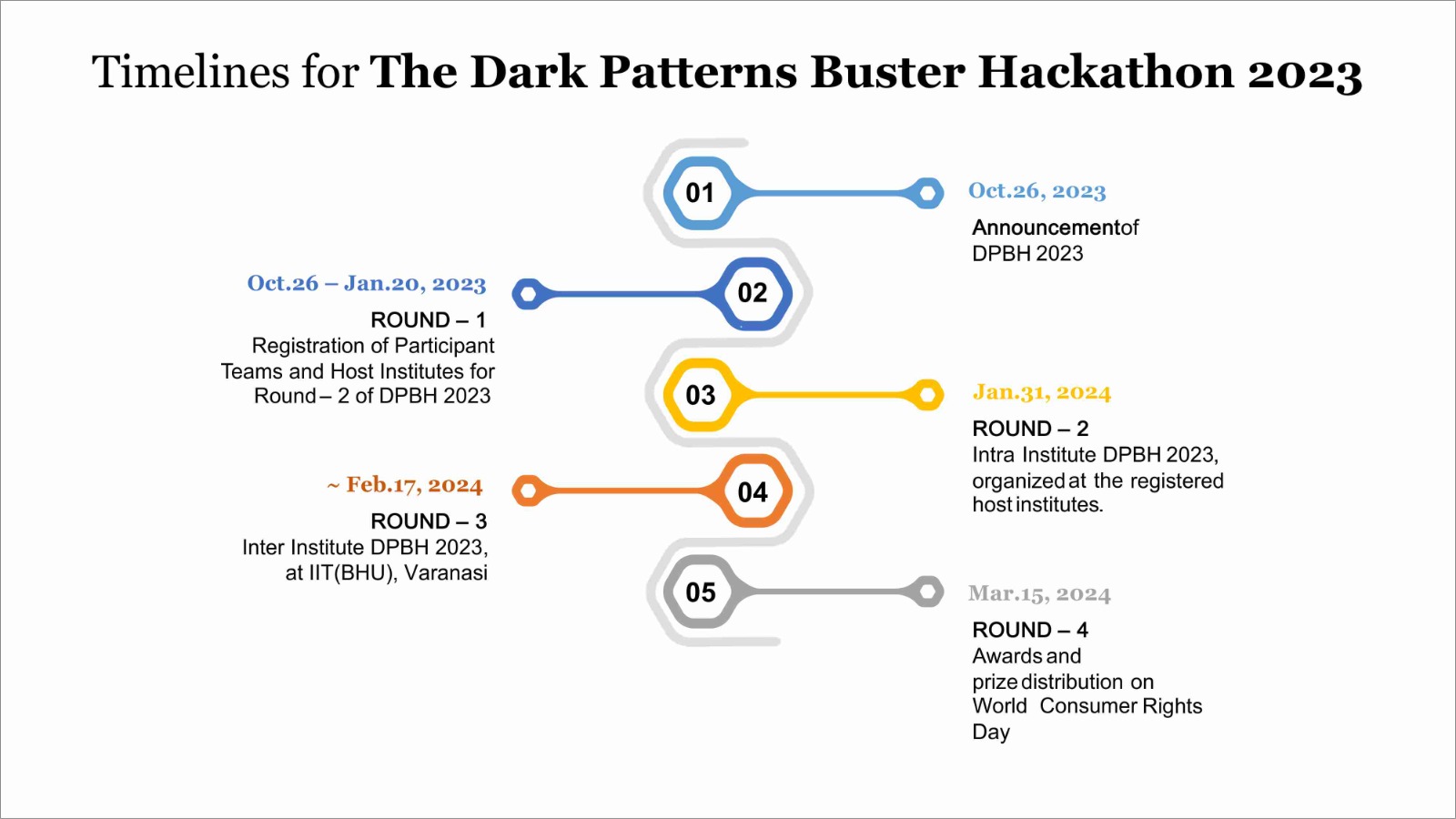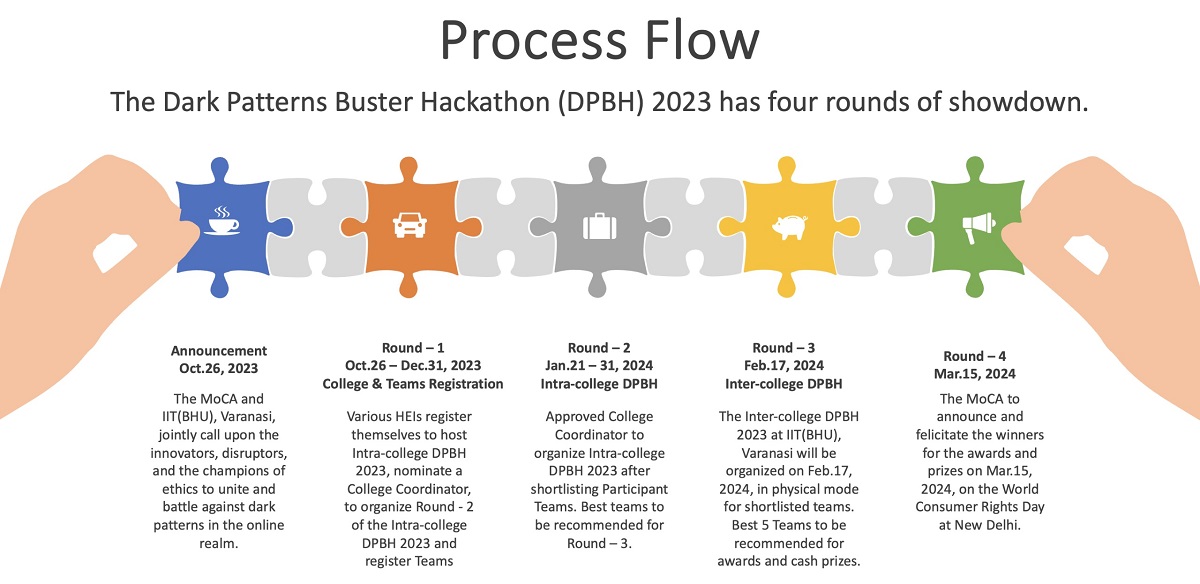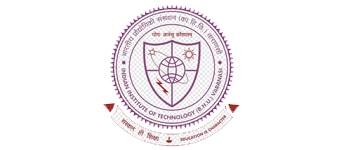
About DPBH
overview
Dark Patterns Buster Hackathon is a pioneering initiative aimed at equipping students with a platform to combat deceptive design practices in the digital world. Our mission is to foster a culture of ethical innovation and problem-solving, addressing the pressing issues we encounter in our online experiences.
In this inaugural edition of DPBH 2023, we're dedicated to nurturing out-of-the-box thinking and innovation in young minds, with a special emphasis on engineering students from every corner of India. Join us as we work together to unmask dark patterns and transform the way we interact with technology
Visit the website to know more: https://dpbh2023.in/

Problem Statement
Design and prototype innovative app or software-based solutions that can detect the use, type, and scale of dark patterns on e-commerce platforms
Desirable functionality of the solution
The minimal scopes and prerogatives of the proposed solution for identifying dark patterns in e-commerce platforms are as under:
- User Interface Deception:
It should be able to spot instances of user interface deception, which is when e-commerce websites use deceptive user interfaces to trick or perplex users into taking unintended actions.
- Subscription Trickery:
Include an algorithm to identify websites using misleading strategies to make it challenging for users to cancel subscriptions or choose to not be charged repeatedly.
- Misleading Product Information:
Device a system that analyses product listings for instances when crucial information (such pricing, availability, or specifications) is omitted or incorrectly presented or kept hidden or disguised over long time periods.
- Forced Account Creation:
It should identify instances in which websites require users to register for accounts without a legitimate reason, impeding the checkout process.
- Limited User Choice:
It should evaluate the degree to which e-commerce websites limit user options by directing visitors towards goods or services.
- Misleading Product Information:
Device a system that analyses product listings for instances when crucial information (such pricing, availability, or specifications) is omitted or incorrectly presented or kept hidden or disguised over long time periods.
- Fake Urgency and Scarcity:
The solution should be able to detect instances where e-commerce sites use fake timers or stock level indicators to create a false sense of urgency and scarcity.
- Hidden Costs:
Also identify hidden costs in the checkout process, such as shipping fees, taxes, or additional charges that are not transparently disclosed.
- Dark Patterns in User Reviews:
The solution should also scrutinize user-generated content (reviews and ratings) for signs of manipulated or fake reviews meant to deceive potential buyers.
- Data Transparency Compliance:
Build suitable algorithm which assesses the degree of compliance of e-commerce platforms with data transparency regulations, such as GDPR or CCPA or similar norms as applicable in India, and if not, flag the degree of potential violations.
During the hackathon, participants must build a comprehensive solution to cater to the above features and functionalities (but not limited to the above), to deliver efficient and effective turnkey solutions to safeguard consumers by identifying and exposing the dark patterns in e-commerce systems in near real-time.
Hackathon Process Flow





